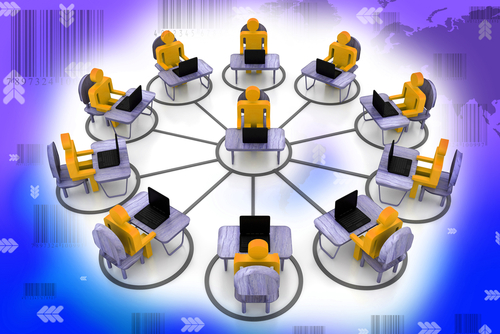How Virtual Ways of Working Impact on Team Productivity
This is one of our free-to-access content pieces. To gain access to all Ideas for Leaders content please Log In Here or if you are not already a Subscriber then Subscribe Here.

Digitally-mediated (or ‘virtual’) relationships and ways of working have been considered an essential part of the way teams will work in the future. But according to this Idea, virtuality can give rise to as many problems as solutions. Here, different types of virtual work are discussed, and based on the example of the U.S. automobile industry, some cautionary advice for organizations is offered.
The ‘lure of the virtual’ has led many organizations to believe that one day not too far away, we will be able to accomplish with computers what has historically only been done physically. Already, the idea of working virtually has moved well away from the realm of science fiction to reality for many organizations around the world.
In an article published in IESE Insight, Paul Leonardi, Diane Bailey and Stephen Barley highlight three different types of virtual work arrangements that are most often used today, each of which has a different impact on the organization as a whole:
The increasing use of these types of transformational technologies in organizations is bringing about significant changes in the way we work. But there is a ‘Catch-22’ to virtual teamwork: if you turn to the virtual in the hope of reducing costs, you may discover production processes become less efficient as humans are replaced with representations. Organizations in this situation often begin investing more in learning activities, resulting in productivity taking a hit as attention is diverted from ‘doing’ to ‘teaching’. This Catch-22 is even more evident when it comes to offshoring—something experienced by a US-based automobile manufacturer (which the researchers refer to as IAC), whose case is detailed in Leonardi et al’s paper.
In order to deal with the challenges of offshoring some of its engineering work, IAC developed a five-stage process which can also be applied to other organizations dealing with similar dynamics:
However, Leonardi, Bailey and Barley acknowledge that these measures may not necessarily solve all the organizational challenges related to virtual teams as there is also the unpredictable human dimension; managers should stay mindful of the fact that often people resist mediated exchanges, and not everyone reacts to new arrangements in the same way.
Finally, the crucial question organizations need to ask themselves before jumping into the digital world is: how should work be organized in order to strike a balance between learning versus short-term productivity? For the effectiveness of the overall system of virtual work, this is an essential consideration.

Ideas for Leaders is a free-to-access site. If you enjoy our content and find it valuable, please consider subscribing to our Developing Leaders Quarterly publication, this presents academic, business and consultant perspectives on leadership issues in a beautifully produced, small volume delivered to your desk four times a year.

For the less than the price of a coffee a week you can read over 650 summaries of research that cost universities over $1 billion to produce.
Use our Ideas to:
Speak to us on how else you can leverage this content to benefit your organization. info@ideasforleaders.com